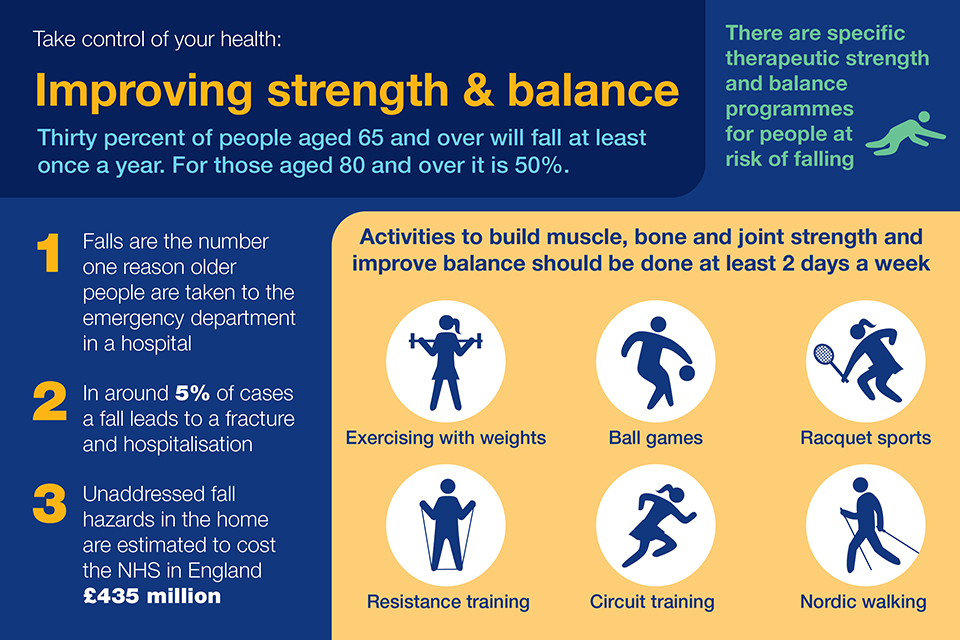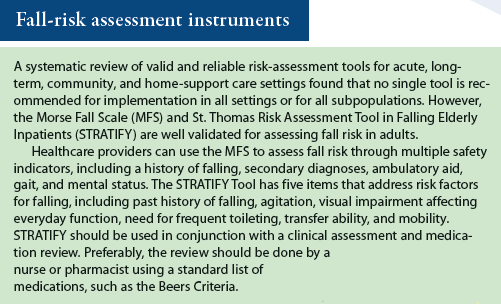The Single Strategy To Use For Dementia Fall Risk
Table of ContentsDementia Fall Risk Things To Know Before You BuyDementia Fall Risk Things To Know Before You BuyDementia Fall Risk Fundamentals ExplainedThe Best Strategy To Use For Dementia Fall Risk
A fall danger assessment checks to see just how likely it is that you will certainly fall. The evaluation typically consists of: This consists of a collection of inquiries about your general health and if you've had previous drops or issues with equilibrium, standing, and/or strolling.STEADI consists of screening, assessing, and intervention. Treatments are recommendations that might reduce your risk of falling. STEADI includes 3 actions: you for your threat of succumbing to your threat factors that can be enhanced to try to avoid drops (for instance, balance troubles, impaired vision) to minimize your threat of dropping by using effective techniques (for instance, supplying education and learning and resources), you may be asked a number of inquiries consisting of: Have you fallen in the past year? Do you really feel unstable when standing or strolling? Are you bothered with falling?, your company will certainly test your strength, equilibrium, and stride, using the complying with fall evaluation tools: This examination checks your stride.
If it takes you 12 secs or more, it might suggest you are at greater risk for an autumn. This examination checks toughness and balance.
Relocate one foot midway forward, so the instep is touching the large toe of your various other foot. Move one foot fully in front of the other, so the toes are touching the heel of your other foot.
6 Simple Techniques For Dementia Fall Risk
Many falls take place as a result of multiple contributing factors; as a result, handling the danger of falling starts with identifying the elements that add to drop threat - Dementia Fall Risk. Some of the most relevant threat factors consist of: Background of previous fallsChronic medical conditionsAcute illnessImpaired stride and equilibrium, reduced extremity weaknessCognitive impairmentChanges in visionCertain risky medications and polypharmacyEnvironmental elements can additionally enhance the threat for falls, including: Insufficient lightingUneven or damaged flooringWet or unsafe floorsMissing or harmed hand rails and get barsDamaged or incorrectly equipped tools, such as beds, wheelchairs, or walkersImproper usage of assistive devicesInadequate guidance of the people living in the NF, including those that display hostile behaviorsA effective fall danger administration program needs a comprehensive professional assessment, with input from all members of the interdisciplinary team

The care plan ought to likewise include interventions that are system-based, such as those that advertise a safe environment (appropriate lights, hand rails, grab bars, and so on). The effectiveness of the treatments ought to be assessed regularly, and the treatment strategy modified as required to reflect changes in the fall threat analysis. Carrying out an autumn danger management system making use of evidence-based ideal method can minimize the prevalence of drops in the NF, while restricting the capacity for fall-related injuries.
The 5-Minute Rule for Dementia Fall Risk
The AGS/BGS standard recommends evaluating all grownups aged 65 years and older for fall threat every year. This screening is composed of asking clients whether they have Check Out Your URL actually fallen 2 or even more times in the past year or looked for medical focus for a loss, or, if they have not fallen, whether they feel unsteady when walking.
People that have fallen as soon as without injury must have their equilibrium and stride examined; those with gait or balance problems need to get added evaluation. A history of 1 loss without injury and without gait or equilibrium troubles does not warrant further analysis beyond continued yearly fall risk testing. Dementia Fall Risk. A fall risk evaluation is called for as part of the Welcome to Medicare exam

The Basic Principles Of Dementia Fall Risk
Recording a drops background is one of the useful reference high quality indicators for fall avoidance and monitoring. copyright medications in certain are independent predictors of falls.
Postural hypotension can commonly be relieved by minimizing the dosage of blood pressurelowering drugs and/or quiting drugs that have orthostatic hypotension as an adverse effects. Use above-the-knee support hose pipe and copulating the head of the bed boosted may likewise decrease postural reductions in high blood pressure. The recommended elements of a fall-focused physical exam are shown in Box 1.

A TUG time above or equivalent to 12 secs suggests high autumn threat. The 30-Second Chair Stand examination analyzes reduced extremity strength and balance. Being incapable to stand from a chair of knee height without utilizing one's arms shows enhanced autumn threat. The 4-Stage Balance test examines fixed balance by having the client stand in 4 placements, each progressively much more difficult.